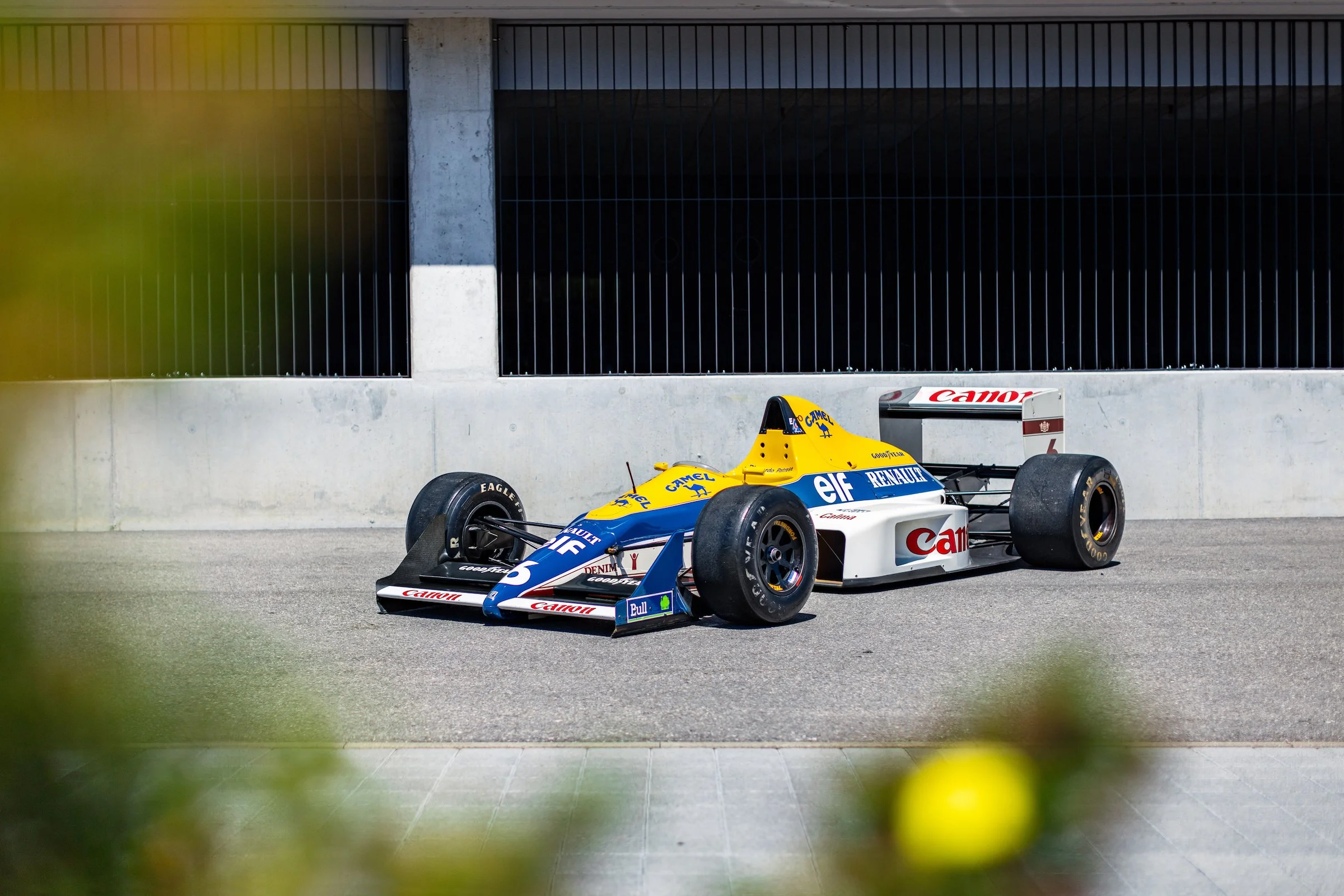The 1989 Williams FW12C

The first Williams design powered by the 3.5-liter V-10 Renault engine that would go onto claim many titles
In contrast to their major competitors—Ferrari, Lotus, and McLaren—Williams opted to run its normally aspirated stopgap FW12-Judd in the 1988 World Championship. The team’s rivals persisted with their outgoing 1.5-liter turbocharged engines for one final season ahead of the sport’s transition to 3.5-liter atmospheric engines for 1989.
Significantly, Williams had a contract in place with new engine supplier, Renault, for 1989. This enabled them to race the FW12 while simultaneously testing the Renault RS1 V-10-engined FW12B. Over the winter, Williams’ designer Enrique Scalabroni further refined the FW12B into the FW12C. The major design changes centered around fine-tuning of the complex Renault installation and a reversion to Passive suspension in place of the FW12’s sometimes-problematic Active system.
Although Williams retained the services of the highly experienced Riccardo Patrese for 1989, they replaced the Ferrari-bound Nigel Mansell with the capable Belgian driver, Thierry Boutsen. The FW12C immediately proved quick, if inconsistent and initially unreliable. This was underlined by the first four rounds of the 1989 Championship yielding a 2nd place for Patrese in Mexico and a 4th place for Boutsen in San Marino. All the while, four mechanically related retirements resulted in a disappointing Monaco Grand Prix, in which the pair finished 15th and 10th respectively. However, a strong remainder of the season resulted in the pair scoring 11 podium finishes—including two wins for Boutsen in Canada and Australia—with Williams finishing a highly satisfactory 2nd in the Constructors’ standings, only behind the all-conquering McLaren team.
One of five FW12Cs constructed, chassis 10 seen here, commenced its Grand Prix career on spare car duty at the third round of the Championship in Monaco. It retained this role at the subsequent Mexican, US and Canadian Grands Prix before making its race debut in the French Grand Prix at Paul Ricard, in the hands of Patrese.
Having qualified a mediocre 8th, the Italian was fortunate to avoid a sizable first corner crash which had Gugelmin’s March turn upside down after clipping Boutsen’s sister Williams, eliminating both Ferraris of Mansell and Gerhard Berger in the process. An immediate red flag necessitated a restart, although Senna’s McLaren, Nannini’s Benetton and Berger all subsequently retired, thereby promoting Patrese to an unexpected 2nd with just 20 laps remaining. However, under pressure from Mansell, the Italian made a rare mistake; a spin costing him the position but still yielding 3rd place at the flag and four World Championship points—much to the delight of the assembled Renault dignitaries.
After a brief return to spare car duties at Silverstone, FW12C/10 travelled to Hockenheim for the German Grand Prix, where it was once again allocated to Patrese. However, Senna’s dominance resulted in him qualifying almost one second clear of 2nd-placed Prost, and nearly two seconds clear of the remainder of the field. Patrese lined up 5th on the grid and, although dropping to 8th on the opening lap following a chaotic start, put in another workmanlike performance to finish 4th behind Senna, Prost and Mansell: exalted company indeed.
The 10th round of the Championship, in Budapest, provided Patrese—and FW12C/10—with a richly deserved pole position. It was one that would ultimately represent the only non-McLaren pole of the year. A heroic lap by the popular Padovano left him more than a quarter of a second clear of Senna and, incredibly, almost a second-and-a-half ahead of Prost. However, after a strong start, the race turned out to be one of frustration and disappointment; a failing radiator making its presence felt after only a handful of laps, permitting Mansell and Senna past to finish 1st and 2nd. Eventually the unit failed altogether on lap 54, ushering Patrese



















